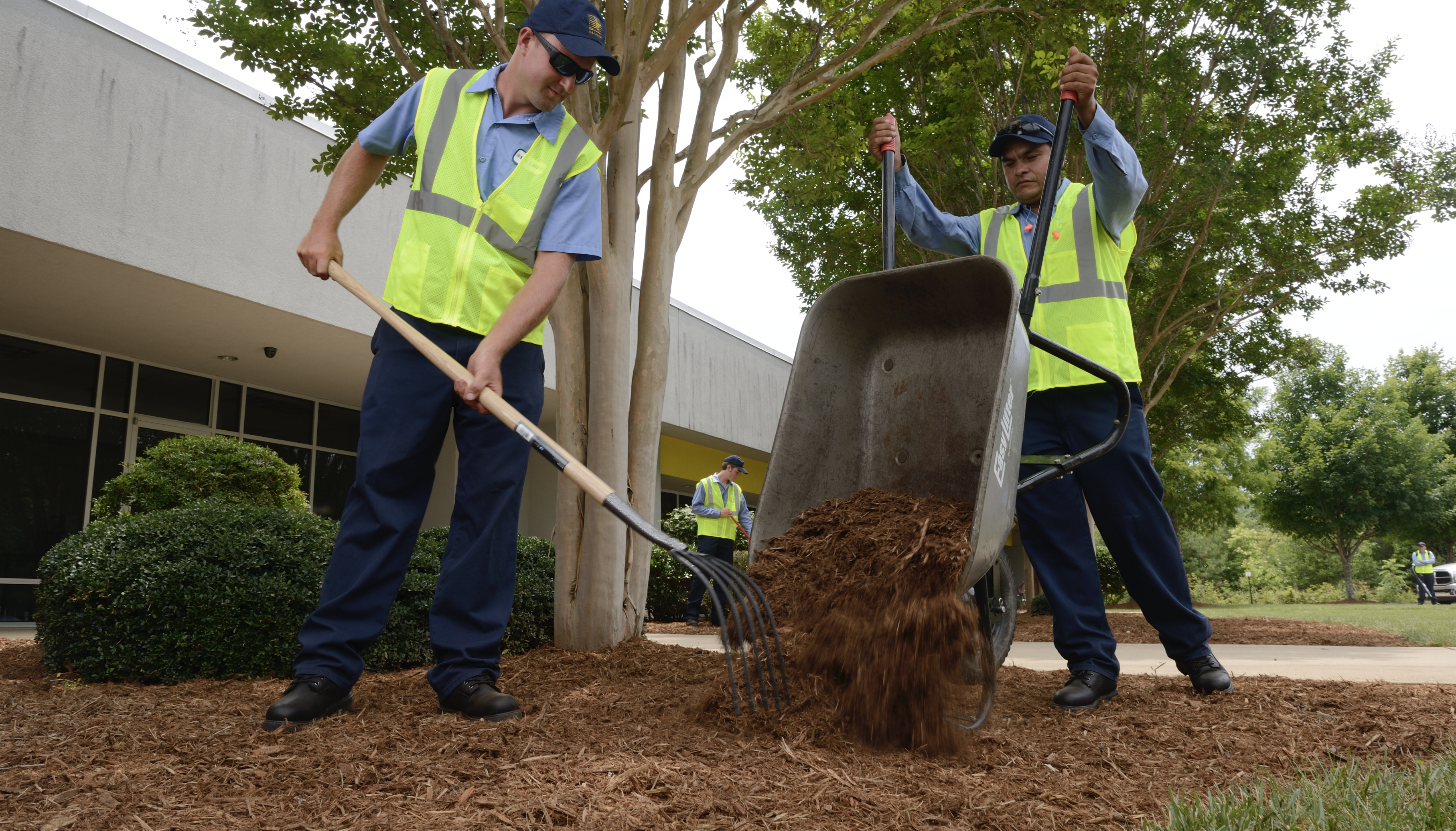Plan For Replacing Trees & Shrubs At The End Of Their Lifespans
If you’re managing the grounds of a business, you are well aware of just how important initial impressions are; and while seasonal color rotation makes a big contribution, if there are shrubs, trees and other specimen plants that have reached the end of their lifespans, they can seriously detract from the curb appeal.
The best thing you can do is take a proactive approach by getting together with your landscape management services provider to plan for the eventuality that you’ll need to replace ornamental trees, hedges, and other plantings at some point–particularly since, from a budgeting standpoint these types of landscape improvements may be considered capital expenditures versus landscaping expenses.
U.S. Lawns NE Mississippi Owner-Operator Mike Kirk Shares Expert Insights
Since this is a subject worth examining more closely, we recently had a very enlightening conversation with U.S. Lawns NE Mississippi owner and horticultural expert, Mike Kirk.
We started by asking him how hard it is to break it to customers that they’ll soon be needing new plant material, and he told us that he doesn’t have a problem with delivering this kind of news, because he stays in close communication with each of his clients.
In fact, Mike maintains that his commitment to relationships is the driving force behind the success of his business; and in the case of being able to prepare for replacing trees and shrubs, it’s a whole lot easier to do when there is a trusting partnership between you and your landscaping team.
Why Is It Important To Replace Declining Plants, Trees & Shrubberies?
We also asked Kirk to explain why replacing plants, trees and shrubberies before they’re just completely dead matters so much, and his answer is simple: “Well, just from a curb appeal standpoint, the longer you allow something to deteriorate, the less curb appeal you have.”
He then went on to tell us that if something is failing early in the season it’s better to remove the plant since open space looks better than a deteriorated plant or tree; but it’s smart to wait until the optimal planting time to replace it, so it will have the best opportunity to become established and flourish.
How Can You Tell When You’ll Need To Budget For New Plant Material?
So, how do you know when it’s time to start budgeting for new plant material? According to Mike, it all starts with routine quality inspections, where his team looks for a number of things like storm or other damage, signs of pests or disease, and whether or not a planting has just about lived out its useful life. Additionally, Kirk will also walk the property with his customer several times a year so he can share these observations and keep them in the know.
His service doesn’t stop there though, because he also said, “One of the things that we really work with the customer on is helping them forecast this in a budget. We’ll actually prepare their grounds maintenance budget a year in advance to give them plenty of time to present it to the decision makers, so they can be prepared and budget for it.”
Now, there are times when Mother Nature wreaks havoc on multiple trees, shrubs or other plant material with an unseasonable bout of below-zero-degree windchills, or extreme drought conditions and obviously, there is no way to plan for these occurrences.
There Are Solutions For Phasing In Plant And Tree Replacements
But fortunately, Mike Kirk and his team, right along with the rest of the U.S. Lawns locations throughout the country are accustomed to working with customers to find solutions that work.
They can even phase the new plantings into multiple budget cycles, which also serves the purpose of enabling them to plan for planting during the right time of year, which, in case you’re wondering, is during the autumn months.
U.S. Lawns Will Design For Immediate And Long-Term Curb Appeal
Another thing Mike (and other U.S. Lawns professionals) will do is create a landscape enhancement design that incorporates slower growing specimen plants and perennials with the addition of strategically placed annuals that will fill in and lend supporting eye appeal for a few years until the longer-lived plantings can take their rightful position as the true focal point.
He also suggested that when it comes to replacing plants, trees and hedges that have lived out their lifespans, you may be better off to replace them with the same variety, or you may want to do a brand-new design. If you have a significant number of plants that have declined due to age, it may be a good time to consider going with a completely new look; if, on the other hand, you’re only replacing a few plants here and there, it’s far more cost effective to use the same kind of plant material.
He also recommends using trees, shrubs and other plants that will have the best chance to survive and thrive in your climate and soil conditions, while avoiding those prone to disease; and if you’re not familiar with the differences, there is an expert available to guide you at your local U.S. Lawns.
So, if you’re interested in learning about a plan to bring new life to your aging landscape, get in touch with U.S. Lawns today. We’ll walk your grounds with you, assess your needs and help you elevate your commercial property’s curb appeal, all while keeping your company’s best interests at the forefront!

